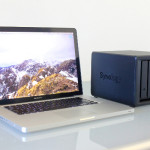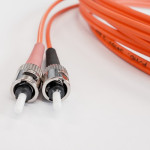Local Storage Options For Your Security System
There are plenty of aspects to consider when it comes to investing and installing a new security camera system. The goal is to deter any theft or crimes while capturing the necessary footage should an incident occur. With that said, aside from the security cameras you choose, your surveillance storage solution should be of high quality and capacity and tailored to your storage needs.
Storing your video footage locally makes it easier to access, and is usually easier to use. In addition, local storage options are much more cost-effective than other storage solutions. In terms of local storage, there are two main options: internal or external. Internal storage is saved within the camera whereas external storage is saved to a hard drive, usually located within a computer or CCTV DVR/NVR. Each option poses their respective advantages and disadvantages.
Internal Camera Storage
When you store your video footage internally, it is usually via a microSD chip within the camera. This option is ideal for those who don’t want to rely on internet access or wiring, as this can slow down your internet. In addition, since internal storage bypasses any transferring to external storage, video footage is nearly immediately available.
The biggest downside of internal storage is its limited storage capacity. In an effort to combat this, most security cameras using local storage only record when motion is detected. And these cameras are more vulnerable because the footage is stored internally, thus, if the camera is stolen, so is any video evidence that could be used to prosecute the thieves.
External Camera Storage
If you need to record footage throughout the day, external storage is a great option as you can store large amounts of video at a relatively low cost (especially compared to online storage.
Wired Camera Storage
Wired solutions will save your network a load of work and will be faster when watching live feed (minimal lag time). Typically, you will have some type of hub that encodes the recording, and then the wire will route to either a DVR (digital video recorder) or a personal computer with lots of storage space. If you plan on editing the video, personal computers are more convenient.
Unfortunately, wired security cameras are susceptible to severed wires. If you opt for a wired camera, you will want to embed the wire through the wall and make sure that your camera is securely mounted.
Wireless Camera Storage
If you opt for wireless cameras, you are choosing a very secure solution. These are also the easiest to install as you usually just plug it in, connect to a network and install software. Your video would be routed to either a personal computer or an NVR (network video recorder).
Unfortunately, wireless cameras are not ideal for smaller home wireless networks. They can slow down the internet and may be susceptible to delays in your video feed. Should you choose wireless solutions, just be sure that your network can handle the load.
While there is not a universal best storage solution, there are solutions that are better suited for you than others. Take the time to evaluate your needs to determine which storage solution would work best for you.
If you need help determining which video surveillance solution to choose, contact us at 888-203-6294 or browse our inventory online at SecurityCamExpert.com. You can also connect with us on Facebook, Google+, Twitter, LinkedIn, and Pinterest.
Security Camera Cables: Ethernet Vs. Fiber Optic
When installing a new surveillance system, whether at home or for your business, there are many factors that need to be considered. Aside from choosing the proper security cameras, devices, and management software, security camera cables are important and often overlooked.
Security camera cables are crucial to your surveillance system as they are responsible for power and data transmission within your system. You will likely be upgrading your system from analog closed-circuit television (CCTV) to an Internet protocol (IP)-based system. Thanks to special parts called encoders, if you are only upgrading your legacy system, you can keep your analog cameras and coaxial cabling in place. The encoders convert the analog output of the camera for use by an IP-based security system.
Alternately, if you are upgrading to IP cameras and want to keep coaxial cable in place, you would need to install adapters at both the device and the switch (coaxial cable cannot handle the digital output of the cameras).
Encoders and adapters are merely affordable, short-term solutions. And because they introduce new points of failure, they can become costlier in the long run.
IP Camera Systems Cables
Upgrading your system includes your security camera cables as well. For IP-based systems, there are two choices: Ethernet (copper) cable or fiber optic (glass) cable.
Ethernet Cable
Made from twisted copper wires, Ethernet cables carry data using an electrical current. Cat 5e is currently the most commonly used in home applications and can support speeds of up to 1,000 Megabits per second (Mbps) over 100 meters (m). Cat 6, 6a, 7, and 8 cables are more commonly used in business and data centers as they can handle larger data transfers, ranging from 10-40 Gigabits per second (Gbps).
Fiber Optic Cable
Fiber optic cables use light to send digital data along flexible, optically pure glass or plastic fibers that are about the width of a human hair and enable rapid movement of data. There are two types (single or multimode) which determine the speed and length of data transmission. The differences between the two types are significant and dictate how each is used.
- Single-Mode Fiber
Because it has a narrow core of optical glass surrounded by highly reflective cladding, single-mode fiber only carries data via a single mode of light (typically transmitted by laser). This allows for lower attenuation (data loss) over longer distances and, thus, is ideal for use in high bandwidth runs (ex. telecom and communications companies, college/university campuses).
- Multimode Fiber
Multimode fiber has a larger core, allowing several different light signals (more data) to pass through simultaneously. With a larger core comes narrower cladding, which results in more data attenuation. With that said, multimode fiber is better suited for shorter distances (ex. transmitting data and signals across a local area network).
Ethernet Vs. Fiber Optic Cables
Choosing between the two options will depend on your individual needs. Here’s a look at the strengths and weaknesses of each.
Data Handling, Speed & Distance
- Ethernet cable has improved over time, with the Cat 7 and Cat 8 able to support up to 25 Gpbs to 40 Gbps over 30 m runs. Unfortunately, regardless of category, copper has a much higher attenuation rate, which only increases with the distance of the run. Thus, you would need to install an amplifier or repeater for every 100 m (328ft) of cable.
- Fiber optic cables are the better choice, as multimode cables can reliably handle 40 Gbps and up to 100 Gbps depending on the quality of the cable. Speed and distance depends on the light mode, but fiber can reliably transmit data between 610-2,000 m (2,000-6,562 ft) before the signal requires amplification.
Usability, Safety & Security
- Ethernet cabling is straightforward and ideal to use in tight spaces since copper is a flexible metal and can bend a great deal before it succumbs to the stress. However, these cables pose very minimal fire hazard risk, particularly if they are used to carry power to a device (such as an outdoor security camera). And if you are running Ethernet cables to outside cameras (ex. on light poles in parking lots, at the edge of a property), there is also a risk of attracting a lightning strike. In addition, they also post a security risk since they tend to leak data, and are also susceptible to outside interference (ex. electrical sources, other data cables).
- Fiber optic doesn’t radiate data signals at all and provides good security, but it’s not without its faults. Because it is made of glass, despite its flexibility, there is a chance for breakage if bent too far. There is also a greater chance of damaging the cable during installation or during some later construction, and it is difficult to properly splice it. These concerns should be raised with vendors you speak to before purchasing.
Cost
- Ethernet is more affordable in the short term. The cable, its components, and installation tend to be cheaper thanks to its ease of use. However, these tend to require more regular maintenance, thus increasing ownership costs over time.
- Fiber optic is definitely more expensive up front, as cost of cables (especially single mode) and installation are much higher. Despite this, it has a lower ownership cost over time thanks to less maintenance (compared to copper). Also, the cables can more easily handle expanded bandwidth without having to run new cable.
While both Ethernet and fiber optic cables have their advantages and disadvantages, it really depends on your security needs. Have you chosen between the two? Share your experience with us on Facebook, Google+, Twitter, LinkedIn, and Pinterest.
For a great selection of CCTV security cameras, systems, and surveillance equipment, please visit SecurityCamExpert.com or call 888-203-6294 today!
Video Surveillance Troubleshooting
Problems that may arise with security camera systems are sometimes related to powering issues or even factory defects. However, more often than not, these problems are usually attributed to improper cabling and connections, which boils down to the installation.
Prior to security camera system installation, technicians must be mindful of the features, functions, and especially the limitations of the actual hardware. While all installations are different, an understanding of the specific system and the customer’s expectation is crucial for a quality job.
Here are some common installation problems you may come across along with helpful trouble shooting tips.
Rolling Lines On The Screen
Whether they are white or multi-colored, these rolling lines or ghosting over the camera’s video are often caused by video cables that run close to high-voltage power sources.
To prevent this, cameras should be tested at another location prior to installation in order to eliminate any hardware defects as a cause to any future issues. Also, keep wires away from sources that supply high-voltage electrical charges at any point of the run. Improperly grounded electrical circuits can also cause video disturbances, which is why high quality camera cables are crucial.
Infrared Glare/”White Out”
The most common causes of IR glare are reflective surfaces and large, lightly colored areas. “White out” (unrecognizable white silhouettes on screen) is often caused by objects that are too close to the camera. Also, if you install infrared security cameras under eaves, the beams of the IR LEDs may hit parts of the structure and bounce back, causing the reflection to blind the camera.
To combat these potential problems, install your cameras in areas clear of any objects that may cause glare or obstruct the camera’s view. Also, be sure that the user keeps these areas clear (at least three feet). You should also test daytime and low-light conditions before completing installation. Cameras with “Smart IRs” that have dynamic IR strengths can help to alleviate these problems as well and ensure high-quality night time images.
IR Cameras Unable To See In The Dark
In order to employ IR cameras properly, a surface is necessary for the IP light beams to bounce off. For example, when you point a flashlight into the night sky it remains dark because there is nothing allowing the light beams to bounce back.
Choose cameras that have sufficient IR distance capabilities. During installation, point the cameras at an angle facing a surface (ex. ground, wall) and test them under low-light conditions before proceeding.
Extreme Glare During Daylight
If your property has lots of glass doors and windows, you may have an issue with extreme glare. Glare from the sun does not mix well with security cameras, which means a special alternative is necessary.
In these situations, you want to invest in cameras with mechanical Wide Dynamic Range (WDR). These are designed to prevail in extreme lighting conditions. While “digital WDR” does it exist and can be helpful in these situations, it does not work as well as true, mechanical WDR.
Insufficient Power Causing Cameras To Drop Out
Without the proper power source, security cameras will not perform properly, causing them to drop out or lose power. While spec sheets may specify the camera’s power needs, they may not factor in the added power necessary for IR/low-light applications. For example, the system may work fine during the day, but drop out at night when the IR kicks in.
It is advised that you use a power supply which supports twice the voltage requirements of all your cameras combined.
When it comes to power, distance may play a role as well. Voltage drops can occur due to poor quality cables and long distances. To avoid this issue, AC voltage is recommended for runs greater than 250ft.
Inadequate Coverage
With great features and functions come limitations as well. For maximum coverage of your property, first map out your installation to identify areas that need surveillance. Based on the locations, you can determine which specific features you need for certain areas. For example, focal lengths and angles of view should be considered (longer lenses for closer view, shorter lenses for wide-angle shots). In general, license plate cameras should be installed no more than five feet from vehicles and valuable points of interest (such as cash registers, entrances and exits) should have a camera dedicated solely to monitoring that area.
Have you come across any issues not mentioned here? How did you resolve it? Share your stories and advice with us on Facebook, Google+, Twitter, LinkedIn, and Pinterest.
Choose SecurityCamExpert.com for quality security cameras along with professional installation and support services. Visit us online or call 888-203-6294 to learn more!


